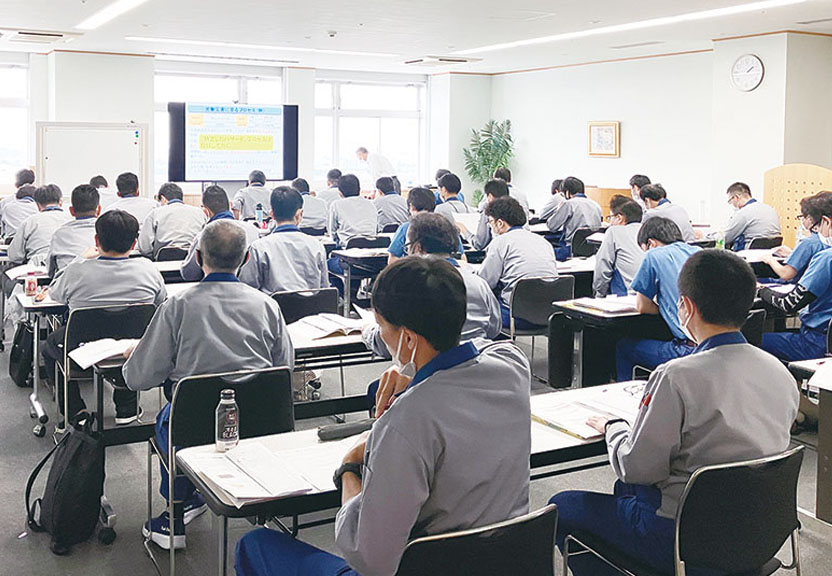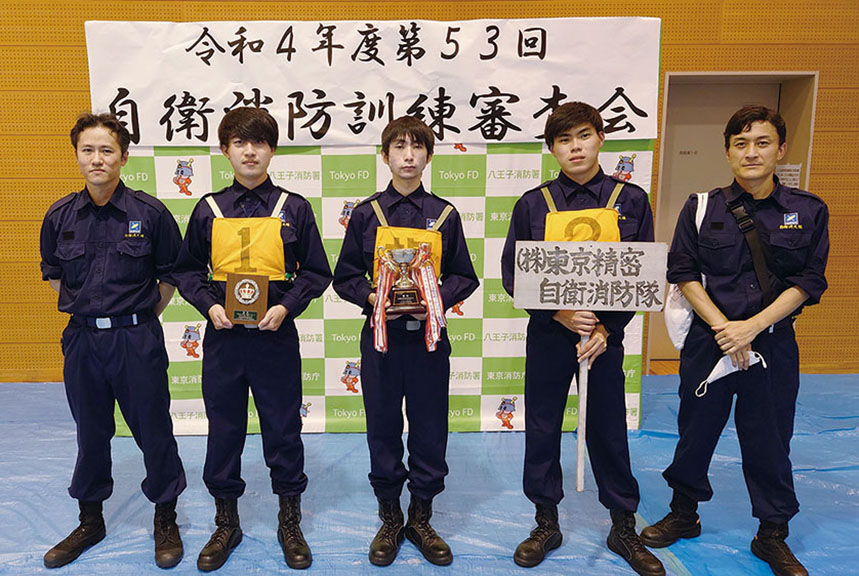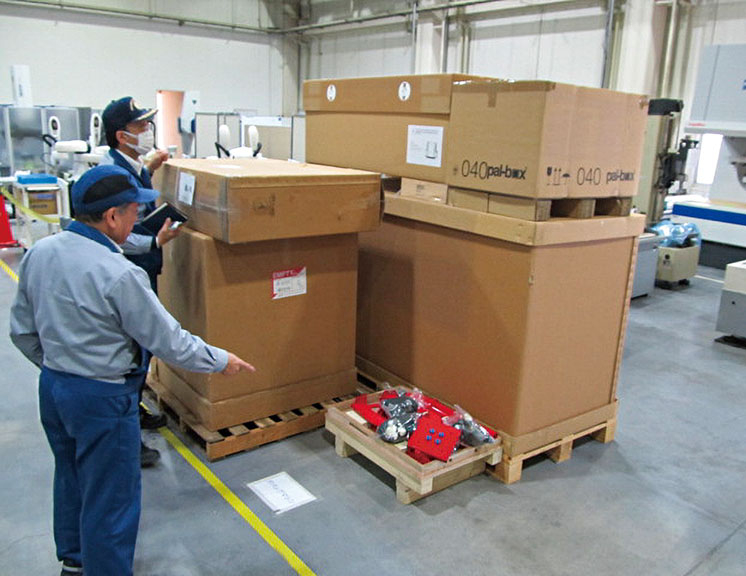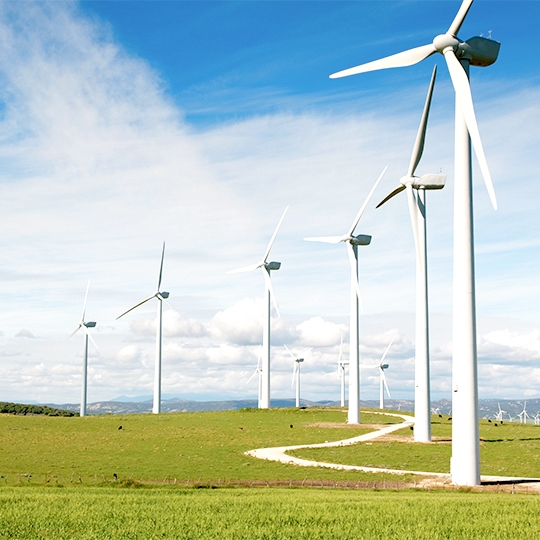Occupational Health and Safety
Many devices, parts, tools, and processing machines from the Tokyo Seimitsu Group, a manufacturer of machinery, can be found at manufacturing and distribution sites. As our products consist of equipment used in production, many tasks such as delivery, installation, maintenance, and inspection occur in the unfamiliar environments of customers’ production sites. By carefully investigating risks associated with these, observing and predicting the movement and flowline of workers, and implementing measures to minimize safety risks, we promote occupational health and safety initiatives so that everyday work actions can be carried out safely and rationally.
Targets and Results
|
Trend of accidents frequency rate*¹ |
Target |
FY2020 |
FY2021 |
FY2022 |
|
Accidents resulting in leave |
0 |
0 |
2 |
1 |
|
Accidents not resulting in leave |
0 |
6 |
10 |
12 |
Locations covered: Hachioji Plant and Tsuchiura Plant
Occupational Accidents
By accident type, “flying or falling objects” and “cuts or abrasions” accounted for the majority of accidents. In response, we are continuing our efforts to prevent recurrence and raise safety awareness through education and guidance on equipment handling, thorough implementation of protective equipment wear, and thorough implementation of the 5S*.
* 5S
A slogan for maintenance and improvement of workplace environments. It stands for sort (seiri), set in order (seiton), shine (seisou), standardize (seiketsu), and sustain (shitsuke)
Accidents by Type
|
Type |
Number of occupational accidents |
Number of injuries or |
|
Flying or falling objects |
0 |
0 |
|
Cuts or abrasions |
5 |
5 |
|
Being caught |
1 |
1 |
|
Falling |
3 |
3 |
|
Colliding |
3 |
3 |
|
Overexertion |
1 |
1 |
Locations covered: Hachioji Plant and Tsuchiura Plant
Trend of accidents frequency rate*²

| FY2018 | FY2019 | FY2020 | FY2021 | FY2022 | |
| Average for manufacturing companies in Japan |
1.20 | 1.20 | 1.21 | 1.31 | 1.25 |
| Tokyo Seimitsu (non-consolidated basis) |
0.00 | 0.71 | 0.00 | 0.53 | 0.26 |
| Semiconductor Company | 0.00 | 0.97 | 0.00 | 0.66 | 0.33 |
| Metrology Company | 0.00 | 0.00 | 0.00 | 0.00 | 0.00 |
*¹
Frequency rate for accidents resulting in leave: Indicates the frequency of injury or death due to occupational accidents
Formula: (Casualties/total hours worked) × 1,000,000
*²
Ministry of Health, Labour and Welfare
(Surver on Industrial Accidents)
Trend of accident severity rate*¹

| FY2018 | FY2019 | FY2020 | FY2021 | FY2022 | |
| Average for manufacturing companies in Japan |
0.10 | 0.10 | 0.07 | 0.06 | 0.08 |
| Tokyo Seimitsu (non-consolidated basis) |
0.000 | 0.003 | 0.000 | 0.040 | 0.000 |
| Semiconductor Company | 0.000 | 0.004 | 0.000 | 0.050 | 0.000 |
| Metrology Company | 0.000 | 0.000 | 0.000 | 0.000 | 0.000 |
*¹
Severity of accidents resulting in leave: Indicates the percentage of the degree of loss caused by occupational accidents
Formula: (Total lost workdays/total hours worked) × 1,000
*²
Ministry of Health, Labour and Welfare
(Surver on Industrial Accidents)
Occupational Health and Safety Promotion Structure
At the Hachioji and Tsuchiura plants, we have established the Safety and Health Committee, with each plant manager serving as the general safety and health manager. The committee plans and deliberates on major health- and safety-related matters in a bid to maintain and improve a safe and comfortable work environment. To raise employees’ awareness of health and safety in the workplace and in the interest of maintaining and promoting their health, the committee meets once a month, in principle, and on an ad hoc basis when the general safety and health manager deems necessary. In fiscal 2022, the committee met 12 times, as scheduled.
We also conduct internal audits twice a year, with results submitted to the Audit Department and reported to the Board of Directors. The Health and Safety Committee is subject to audits by the Audit Department.
Safety and Health Committee

Risk Assessments at Work Sites

We regularly conduct risk assessments by conducting workplace inspections to check working environments and identify issues. This leads to the creation of measures for dealing with these issues and brings about improvements. In addition to risk assessments performed when introducing new machinery or changing work procedures, we work to avoid risk by conducting education and training on machinery operation, heavy equipment work, wiring operation, and other topics as needed.
Education and Training
In-house Training
We provide in-house training to help employees avoid hazards in a variety of situations, including commuting, traveling, and working in the factory.
Number of attendees in FY2022
|
|
Number of attendees |
| Traffic safety seminar | 391 |
| Risk assessment training | 86 |
| Forklift, sling work, crane safety training at Tsuchiura Plant | 63 |
| High pressure gas workshop safety seminar | 36 |
| Special training on low voltage electricity handling | 27 |


Self-Defense Firefighting Training
Each year, each plant’s Disaster Prevention Subcommittee plans and conducts emergency evacuation drills for all departments in the plant. The Hachioji Plant conducted an evacuation drill in fiscal 2022 under the e-learning theme "Cardiopulmonary Resuscitation and AED Use Procedures." The details of such training are reported to the Tokyo Fire Department, by submitting a “Notice of Self-Defense Fire Drill Implementation.”
Number of attendees in FY2022
|
Number of attendees |
|
|
Hachioji Plant e-learning theme: "Cardiopulmonary Resuscitation and AED Use Procedures" |
896 |
Training

Self-Defense Fire Brigade
At the Hachioji Plant and Tsuchiura Plant, we organize self-defense fire brigades and conduct regular training one or two times a month according to annual plans. The Company also participates in an annual self-defense firefighting training review hosted by the Hachioji Fire Department and the Hachioji Fire Prevention Management Study Group. In this competition, self-defense fire brigades from business establishments in the city gather to compete in a heated competition to test the effectiveness of their daily training based on speed and accuracy of indoor fire hydrant operation. 32 self-defense fire brigades from Hachioji City participated in the self-defense firefighting training review for fiscal 2022, and our self-defense fire brigade won in the “No.1 Fire Hydrant, Male Group B” category.
Emergency Scenario Training
Emergency scenario training is conducted at least once a year at each plant so that appropriate tasks, such as recovery/cleaning, can be carried out in the event of a hazardous substance leak or splash-based accident. Each division that handles hazardous substances submits a training plan to the person responsible for environmental management at the beginning of the relevant term and submits a report after the training is conducted. In fiscal 2022, the Hachioji Plant conducted training 32 times for 11 divisions. At the Tsuchiura Plant, 143 people from the plant department took part in chemical cleaning agent splash prevention training.
External Training and Seminars
Hachioji Branch of Tokyo Federation of Labour Standards Associations
In order to promote activities to prevent industrial accidents among local workers, we participate in seminars held by the Hachioji Branch of Tokyo Federation of Labour Standards Associations. These seminars are designed for participants to acquire the skills necessary to engage in work. Employees who have completed the seminars take in-house practical tests tailored to factory environments for thorough health and safety education.
Number of attendees in FY2022
|
Content of courses conducted by the Tokyo Federation of Labor Standards Associations, Hachioji Branch |
Hachioji Plant Number of attendees |
Tsuchiura Plant Number of attendees |
| Training course for sling and crane operators | 12 | 2 |
| Foremen and safety and health supervisors | 8 | 0 |
| Operation chief of organic solvents | 7 | 0 |
| Skill training course for chief of specified chemical substances (tetraalkyl lead, etc.) | 6 | 0 |
| Handling of dangerous substances Category Otsu-4 | 0 | 1 |
| Forklift | 5 | 4 |
| Power press | 1 | 0 |
Semiconductor Equipment Association of Japan (SEAJ)
The Semiconductor Equipment Association of Japan promotes SEAJ recommended safety training an industrial standard for safety training of personnel involved in the installation,
maintenance, and servicing of semiconductor manufacturing equipment. At the Hachioji Plant, our employees who belong to Semiconductor Equipment Association of Japan’s Safety Training Subcommittee conduct online-based SEAJ Work Safety Seminars for Semiconductor Company CE Department employees and manufacturing and design engineers who work on the manufacturing floor or in clean rooms. A total of 430 employees have participated in the seminar so far.
|
FY2022 SEAJ Recommended Safety Training |
Number of attendees |
|
New attendees |
42 |
|
Attendees for recertification |
53 |
Disaster and Accident Prevention

At the Tsuchiura Plant, managers and general staff conduct weekly 5S patrols, while the Health and Safety Subcommittee members perform monthly safety patrols. In cases where improvements are needed, follow-up patrols are conducted after the improvements are proposed, to confirm the effectiveness of the patrols. At the Hachioji Plant, we conduct safety inspections of all workplaces once a year through teams composed of several persons, including the Plant Manager. On safety inspections, we use a check sheet to identify safety risks. At workplaces where risks are discovered, we conduct follow-up inspections following a set period of time after directions for improvement are issued, to confirm the effectiveness of the improvements. We regularly carry out 5S patrols to promote the tidying and ordering of workplaces. Using a scoring system introduced in fiscal 2017, we commend high-scoring workplaces twice a year, increasing 5S awareness in every workplace.
Handling of Chemicals and Chemical Substances
When considering the purchase of industrial chemicals, we conduct a chemical substance risk assessment to check for the presence of contained environmental pollutants (organic
solvents, specified chemical substances, hazardous materials, etc.), in accordance with our internal regulations. The department in charge of this matter at the Hachioji Plant decides whether to purchase the chemicals based on the results of assessments conducted at the Hachioji and Tsuchiura Plants. In fiscal 2022, 76 new chemical substance risk assessments were conducted at the two plants, both for new uses and for reviews of existing uses.
We require divisions that manage and use chemical substances to conduct regular inspections and regular quantity checks. The Company is also promoting the reduction and substitution of chemical substances in accordance with the PRTR Act, Ordinance on Prevention of Organic Solvent Poisoning, and the Poisonous and Deleterious Substances Control Act. In addition, we carry out patrols to check the status of chemical management and storage and the supplies used to prevent chemical leaks through the Regulated Substance Control Working Group under the Safety and Health Committee.
Environment・Society・Governance



